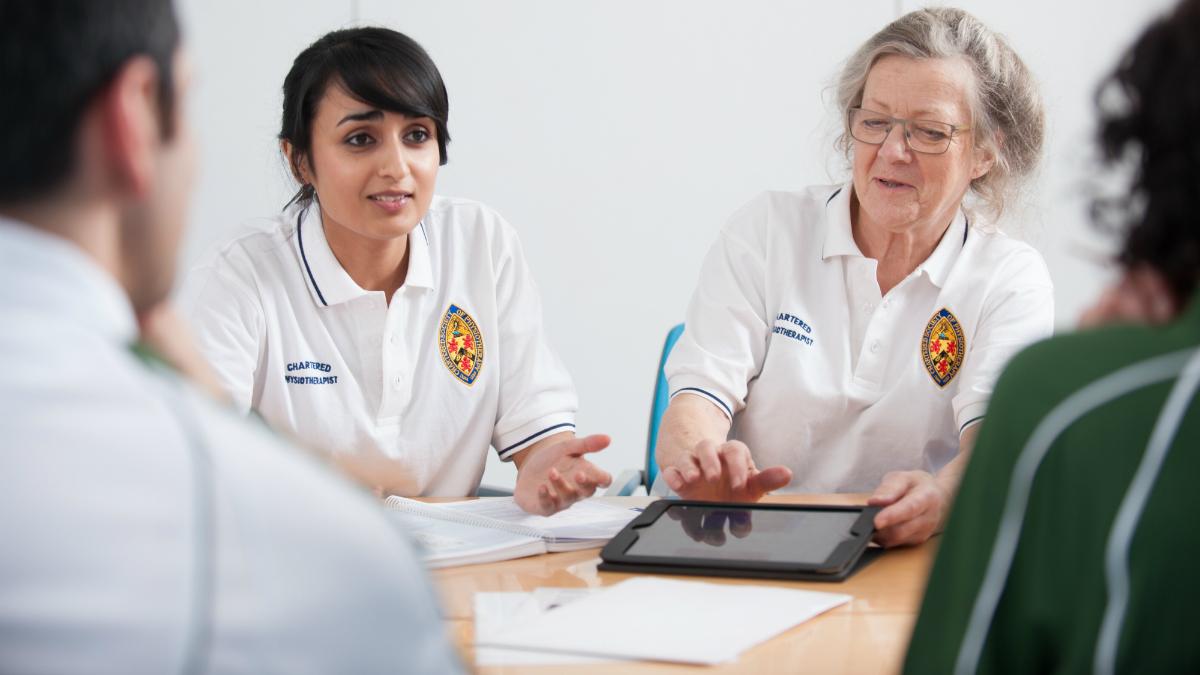By agreeing on clinical vocabulary, we can ensure that record systems speak the same language

The government’s National Information Board has mandated that SNOMED CT be implemented within all primary and secondary care by April 2020. So how does this affect you as a physiotherapist?
What is SNOMED CT?
SNOMED CT is easiest to understand as a large vocabulary of clinical terms used by healthcare staff in their patients’ records. It allows you to enter the clinical terms you use into a patient’s record at the point of care. It does not analyse any of our patients’ information.
SNOMED CT contains terms used in patients’ records by all healthcare professions and specialties. These terms cover diagnoses, clinical findings, symptoms, procedures, body structures, aetiologies, family history, observations, allergies and much more.
Traditionally, clinical terminology has differed depending on variables such as department, clinical specialty, region or personal preference. Language may also change over time in line with developments in our understanding. For example, tendinitis is now referred to as tendinopathy.
As a physiotherapist, you may have a preference for which terminology you use when documenting the diagnosis ‘frozen shoulder’. However, there will be several synonymous ways of describing adhesive capsulitis of the shoulder. Therefore, SNOMED CT groups together terms that mean the same thing.
To perform large-scale data collection from our patients’ electronic health records, we need to code what we write so that, like us, a computer can understand these terms represent the same condition. This is why each term in SNOMED CT has a corresponding concept ID number.
Healthcare vocabulary is not only grouped synonymously but in a logical structure. For example, adhesive capsulitis of the shoulder is a type of capsulitis. The relationships between concepts organise the terminology into what is known as a hierarchy.
Why is SNOMED CT important?
When all healthcare providers move to SNOMED CT as an agreed clinical vocabulary, electronic health record systems will speak the same ‘language’. Through interoperability (the ability of systems within healthcare organisations to exchange and integrate data seamlessly), data can be exchanged and the need to re-enter clinical terms is reduced, saving time and preventing typing errors. As a result, it will be easier to pool our data for secondary uses like research and large audits.
Within physiotherapy services, patients’ data can be identified electronically, supporting the clinical audit of our services more accurately. This can enable us to identify and research our most prevalent conditions or gain a greater understanding of patients’ journeys, which may improve the care and service we deliver.
Individual clinicians will benefit, as recording notes using SNOMED CT will improve accuracy and reduce time spent working within electronic health record systems. Once established, it may assist with supporting decisions in real time – for example, drug alerts and care pathways.
There are many wider applications of large-scale data collection. In the future, data collected through SNOMED CT may be used in machine learning and artificial intelligence systems. But while the advantages are clear, storing and using this data can be time-consuming, costly and not without implementation challenges. We must also consider the implications of using this information, including for data security and individual privacy.
Examples of SNOMED CT
The CSP has worked with clinical terminologists to develop some SNOMED CT reference sets that can help physiotherapy services to identify relevant SNOMED CT terms useful for physiotherapy practice.
There is national guidance for eating disorders and early intervention psychosis to include SNOMED CT for care-related data.
National data collections use SNOMED CT – for example, the Mental Health Services Data Set and the Emergency Care Data Set.
In primary care, SNOMED CT is used for everything. Around 1.5 billion SNOMED CT codes will be entered into patient records in a year and these will drive safe prescribing, alerts and patient recalls, for example, as well as many other activities. This is what other settings can look to achieve with the implementation of SNOMED CT.
What should I do next?
If you would like to build your understanding of SNOMED CT, there are a number of resources you can use:
NHS Digital SNOMED CT page – information, animated videos, webinars and case studies about SNOMED CT in the UK.
To search SNOMED CT for clinical terms that you use, access the NHS Digital SNOMED CT browser.
SNOMED International education pages – find information about how SNOMED CT is being used internationally.
The Royal College of Paediatrics and Child Health has a good resource explaining SNOMED in a clinical context.
Authors:
- Robbie Whittle
- Christy Holland
- Kath Priest
Edited by Daniel Allen



































